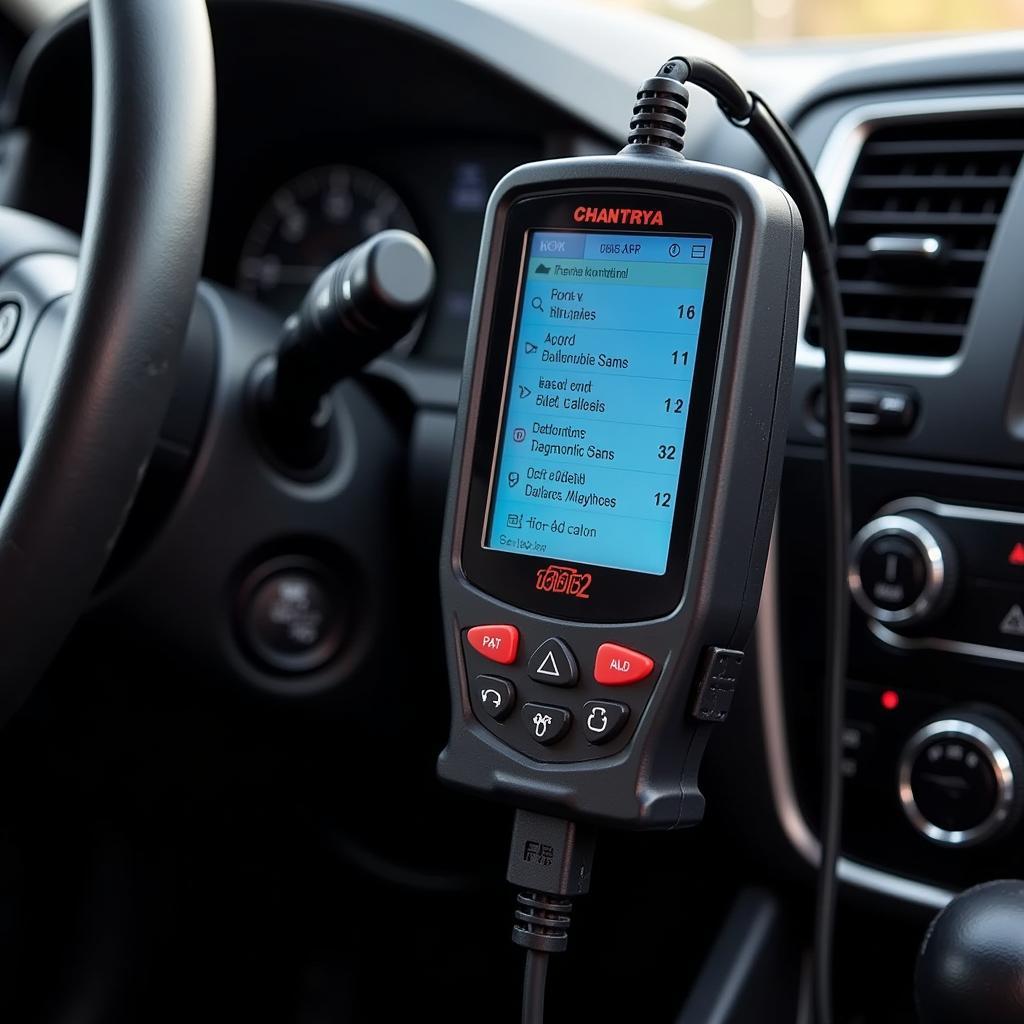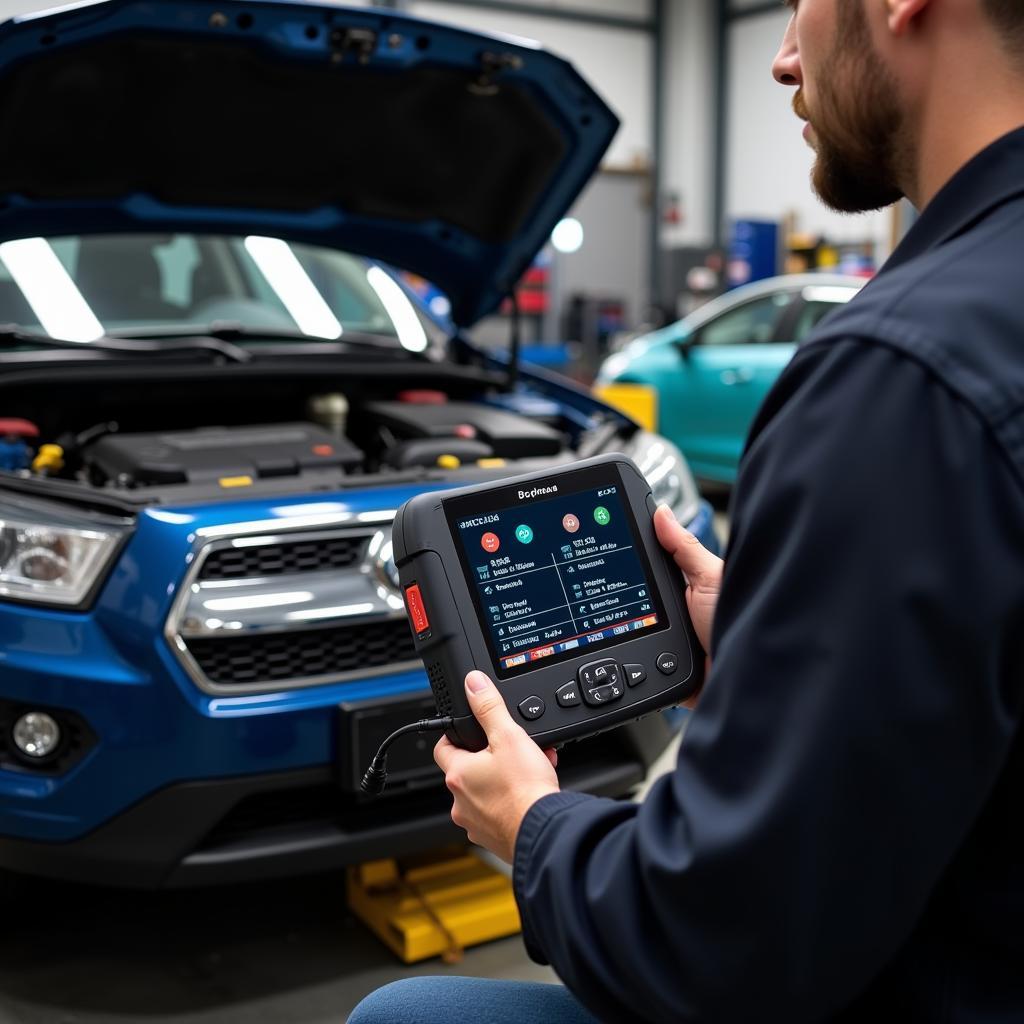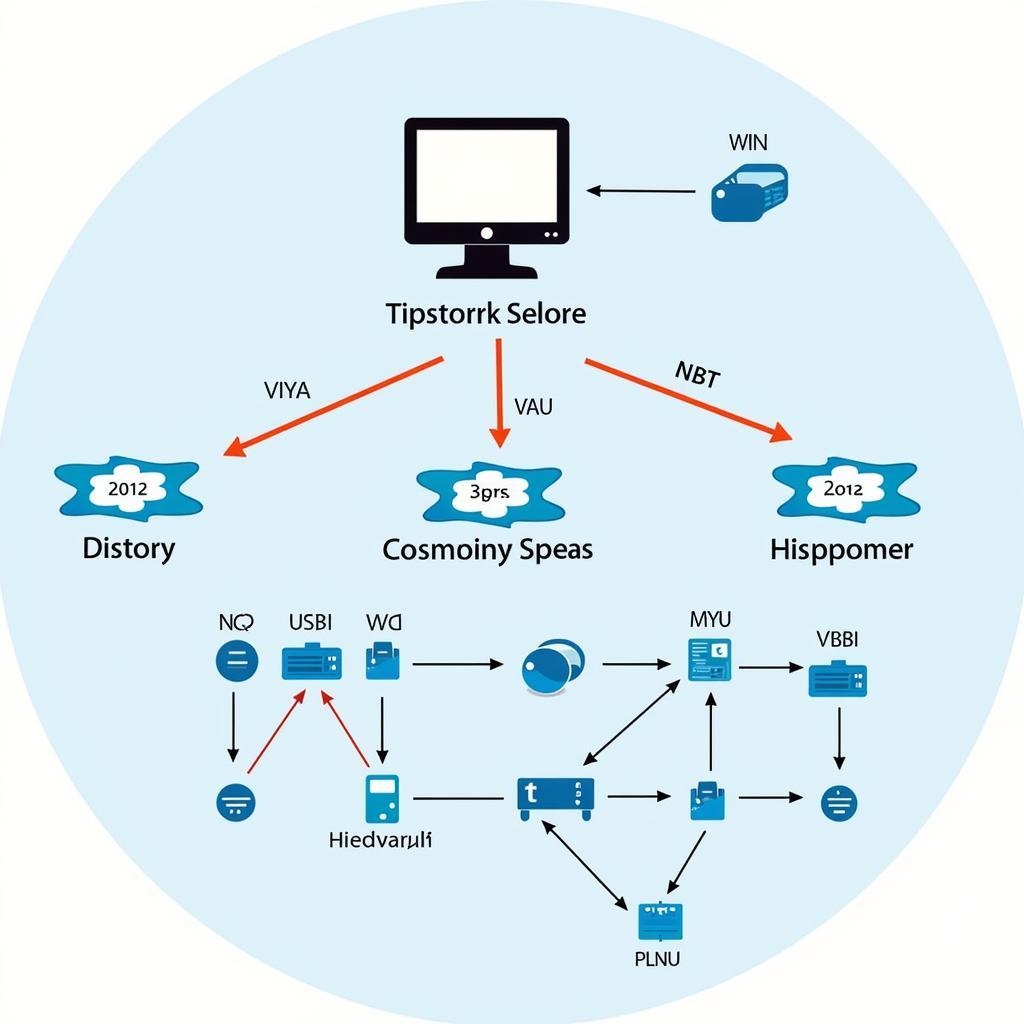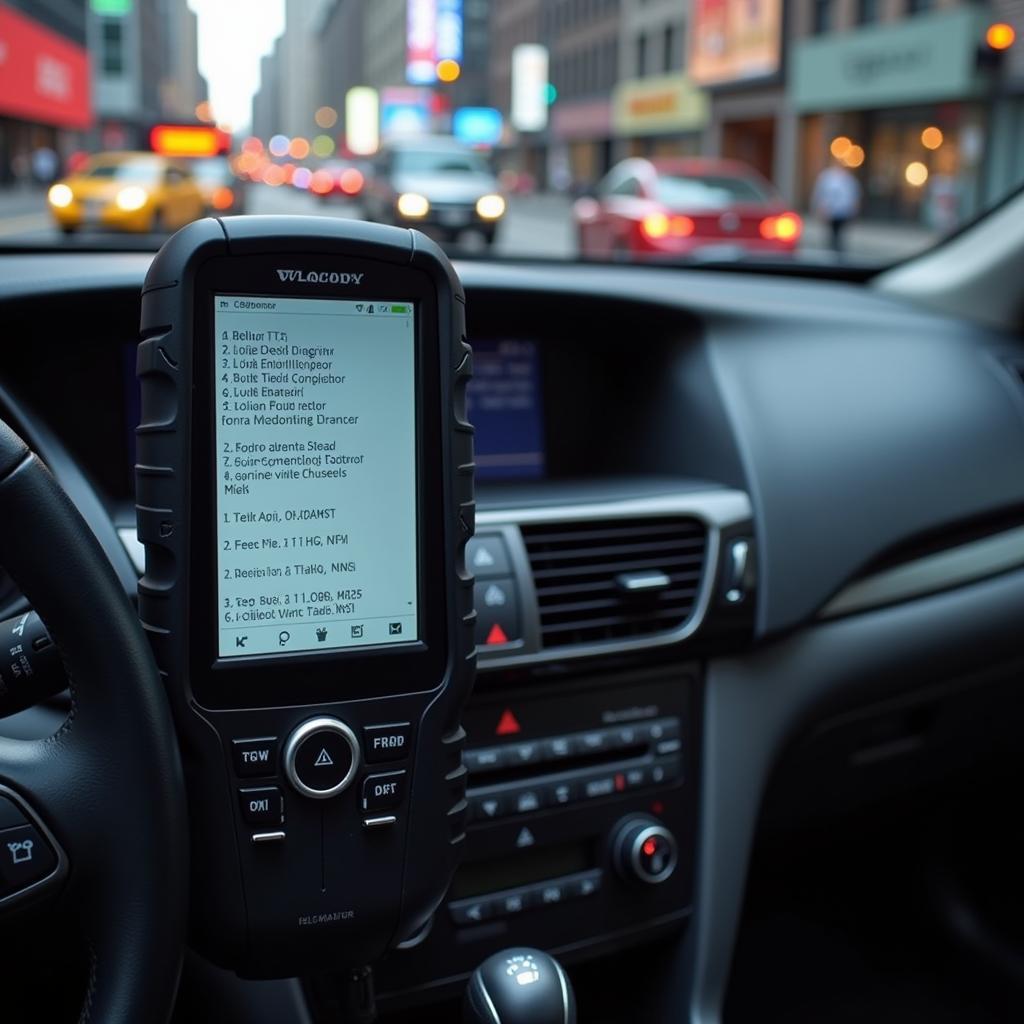A Car Scanner Code List is essential for any car owner, mechanic, or automotive enthusiast who wants to delve deeper into vehicle diagnostics. These codes, also known as OBD2 codes, provide a standardized system for identifying malfunctions within a vehicle’s systems. Understanding these codes can empower you to pinpoint issues, streamline repairs, and potentially save money in the long run.
This comprehensive guide will explore everything you need to know about car scanner code lists, from their meaning and importance to practical tips for utilizing them effectively.
Deciphering the Language of Your Car: What is a Car Scanner Code List?
 Car Diagnostic Tool Connected
Car Diagnostic Tool Connected
A car scanner code list, commonly referred to as an OBD2 code list, is a compilation of standardized diagnostic trouble codes (DTCs) used by vehicles manufactured since 1996. These codes, displayed as a combination of letters and numbers, represent specific malfunctions detected by the vehicle’s onboard computer system, also known as the Engine Control Unit (ECU).
Imagine your car’s ECU as its brain, constantly monitoring various sensors and components. When a sensor detects an anomaly, the ECU logs a corresponding code, illuminating the “Check Engine” light on your dashboard. This code acts as a distress signal, alerting you to a potential problem that requires attention.
The Significance of Car Scanner Code Lists: Empowering Car Owners and Mechanics
 Mechanic Diagnosing Car with Scanner
Mechanic Diagnosing Car with Scanner
Car scanner code lists have revolutionized the way we diagnose and repair vehicles. Prior to their standardization, pinpointing the root cause of a car problem often involved a time-consuming and costly process of elimination. These codes provide a universal language understood by mechanics and car owners alike, bridging the gap between complex automotive systems and accessible troubleshooting.
Here are some key benefits of utilizing a car scanner code list:
- Accurate Diagnosis: Instead of relying on guesswork, these codes pinpoint the exact system or component experiencing issues, leading to faster and more precise repairs.
- Cost Savings: Early detection through OBD2 codes allows for timely intervention, potentially preventing minor issues from escalating into major (and expensive) problems.
- Increased Transparency: Understanding the codes empowers car owners with knowledge about their vehicle’s health, enabling them to make informed decisions about repairs and maintenance.
Diving Deeper: Understanding the Structure of OBD2 Codes
Each OBD2 code is structured to provide specific information about the malfunction detected:
[Letter] [Number] [Number] [Number] [Letter]
-
First Letter:
- P: Powertrain (engine, transmission, emissions)
- B: Body (airbags, power windows, central locking)
- C: Chassis (ABS, traction control, suspension)
- U: Network & Communication (modules, wiring)
-
First Number:
- 0: Standardized code (SAE – Society of Automotive Engineers)
- 1: Manufacturer-specific code
-
Second Number:
- 0: Fuel and Air Metering
- 1: Fuel and Air Metering (for Diesel Engines)
- 2: Injector Circuit
- 3: Ignition System or Misfire
- 4: Auxiliary Emissions Controls
- 5: Vehicle Speed and Idle Control
- 6: Computer Output Circuit
- 7: Transmission
- 8: Transmission (for 4WD vehicles)
- 9: Manufacturer-Specific
-
Third and Fourth Numbers: These digits specify the individual component or circuit within the system.
-
Fifth Letter (Optional): Some manufacturers use an optional fifth letter to denote a sub-system.
Essential Tools for Utilizing Car Scanner Code Lists
To access and interpret OBD2 codes, you’ll need a car diagnostic tool, commonly known as an OBD2 scanner. These scanners come in various forms, from basic code readers to advanced professional-grade tools.
- Basic Code Readers: These affordable handheld devices can read and clear basic OBD2 codes.
- Bluetooth Scanners: These compact devices plug into the OBD2 port and transmit data wirelessly to your smartphone or tablet, allowing you to use diagnostic apps.
- Professional-Grade Scanners: Used by mechanics and dealerships, these comprehensive tools offer advanced features such as live data streaming, bi-directional control, and access to manufacturer-specific codes.
You can find a variety of car diagnostic tools online, including options for all car diagnostic scanner and even budget-friendly choices like diagnostic scan tool for all cars 2019 – under 300. Be sure to choose a scanner that aligns with your needs and budget.
Interpreting Car Scanner Code Lists: Practical Tips and Best Practices
Simply retrieving a car scanner code list is just the first step. Here’s how to make the most of this valuable information:
-
Record the Codes: Note down all the codes displayed on your scanner before clearing them.
-
Research Each Code: Consult a reliable online database or repair manual to understand the meaning of each code.
-
Consider the Context: Don’t jump to conclusions based on a single code. Analyze the codes collectively and consider any recent repairs or symptoms your car is exhibiting.
-
Start with the Basics: Before suspecting complex issues, check for simple fixes like loose gas caps, faulty oxygen sensors, or worn spark plugs.
-
Consult a Professional: If you’re unsure about the diagnosis or repair, don’t hesitate to seek the expertise of a qualified mechanic.
Beyond Diagnostics: Car Scanner Code Lists for Enhanced Automotive Insights
Car scanner code lists are not limited to troubleshooting problems. They can also be used proactively to:
-
Monitor Vehicle Health: Regularly scanning for codes can help you identify potential issues before they escalate, allowing you to address them proactively.
-
Track Performance: Some scanners provide live data streams, allowing you to monitor engine parameters, fuel economy, and other performance indicators.
-
Customize Settings: Certain scanners offer bi-directional control, enabling you to adjust specific vehicle settings, such as idle speed or door lock behavior.
Conclusion
Understanding and utilizing car scanner code lists can empower you with valuable insights into your vehicle’s health and performance. By embracing these codes as a tool for diagnosis, preventative maintenance, and performance monitoring, you can enjoy a smoother, more cost-effective, and ultimately more enjoyable driving experience.
For expert assistance with car diagnostic tools and solutions, contact ScanToolUS at +1 (641) 206-8880 or visit our office at 1615 S Laramie Ave, Cicero, IL 60804, USA.




Pingback: Unlocking the Mystery: Your Guide to Car Fault Diagnosis Scanners - Car Scan Tool